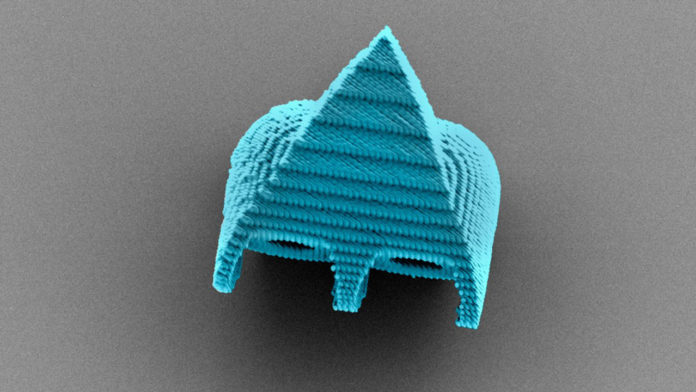A team of engineers, led by Mingming Wu, professor of biological and environmental engineering in the College of Agriculture and Life Sciences, has developed animal-cell-sized robots that can be powered and steered by ultrasound waves. These triangular micro-robotic swimmers could one day be a formidable new tool for targeted drug delivery.
The micro-robotic swimmer, which looks like an insect crossed with a rocket ship, is made of a hydrophobic (water-repelling) resin and has a pair of cavities etched in its back. Because its resin material is hydrophobic, when the microrobot is submerged in the solution, a tiny air bubble is automatically trapped in each cavity. When an external ultrasound transducer is aimed at the robot, the air bubble oscillates, generating vortices – also known as streaming flow – that propel the swimmer forward.
By varying the sound waves’ resonance frequency, it’s possible to selectively excite either of the bubbles – or tune them together – thereby controlling which direction the swimmer is propelled. In this way, they can be steered by remote control.
While previous studies have produced microbots that were propelled by a single bubble, Cornell researchers are the first to pioneer such a robot swimmer that uses two bubbles, each with a different diameter opening in their respective cavity.
Researchers are now working to make the swimmers biocompatible, so they can navigate among blood cells that are roughly the size they are.
“For drug delivery, you could have a group of micro-robotic swimmers, and if one failed during the journey, that’s not a problem. That’s how nature survives,” Wu said. “In a way, it’s a more robust system. Smaller does not mean weaker. A group of them is undefeatable. I feel like these nature-inspired tools typically are more sustainable because nature has proved it works.”
